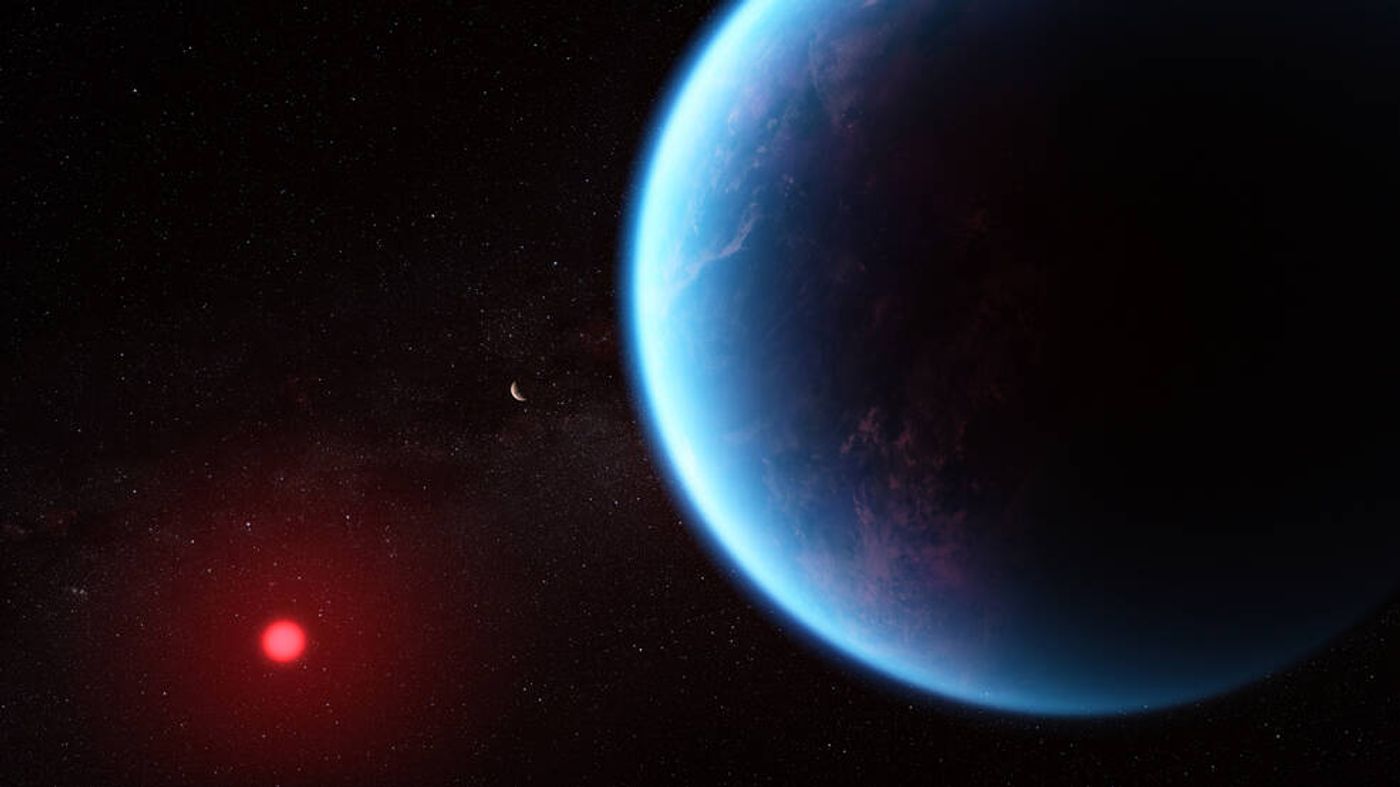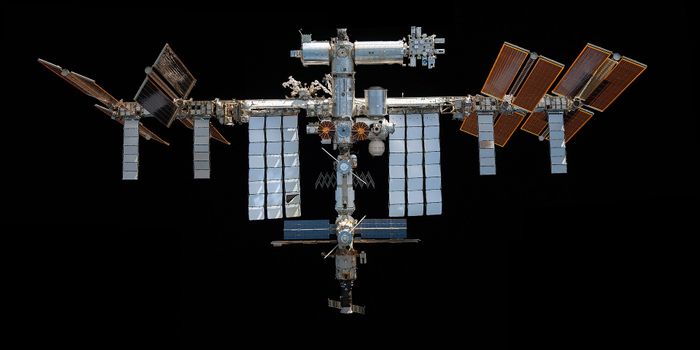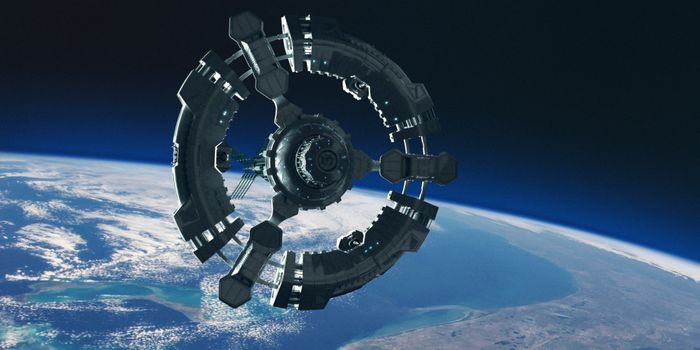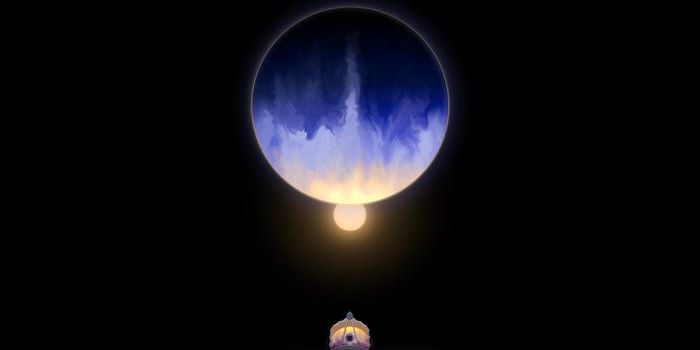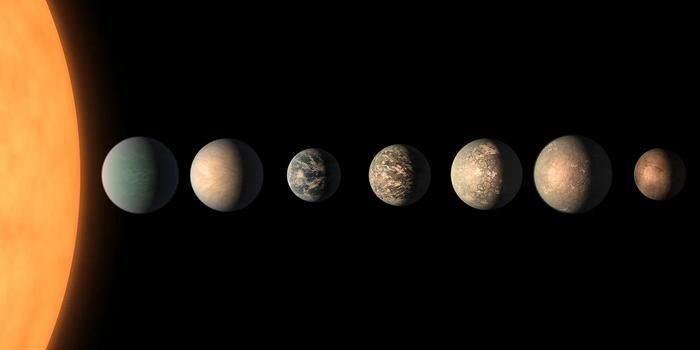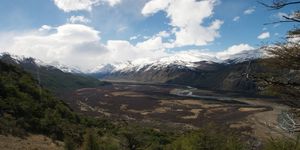Hubble and Webb Telescopes Shed Light on K2-18 b's Habitable-Zone Atmosphere
Observations made by NASA’s Hubble Space Telescope and the James Webb Space Telescope (JWST) have disclosed the existence of carbon-bearing molecules within the atmosphere of exoplanet K2-18 b, which is approximately 8.6 times the mass of Earth. For context, Neptune is approximately 20 times as massive as the Earth, so the mass of K2-18 b puts it within the “super-Earth” category, although the researchers responsible for the discovery refer to K2-18 b as a “sub-Neptune”. The detected molecules potentially include carbon dioxide and methane and hold the potential for K2-18 b to have liquid water on its surface and a hydrogen-rich atmosphere, also known as a Hycean world, which is a class of sub-Neptune exoplanet.
Artist rendition of K2-18 b. (Credits: Illustration: NASA, CSA, ESA, J. Olmsted (STScI), Science: N. Madhusudhan (Cambridge University))
"Our findings underscore the importance of considering diverse habitable environments in the search for life elsewhere," said Dr. Nikku Madhusudhan, who is an astronomer at the University of Cambridge and lead author of the recent paper presented at The First Year of JWST Science Conference announcing these results. "Traditionally, the search for life on exoplanets has focused primarily on smaller rocky planets, but the larger Hycean worlds are significantly more conducive to atmospheric observations."
Discovered in 2015 using the transit method from NASA’s K2 mission, K2-18 b is located approximately 124 light-years from Earth and partially orbits within its star’s habitable zone (HZ), with most of the orbit resides just within the HZ, meaning K2-18 b becomes hotter for most of its orbit. While the existence of carbon-bearing molecules shows promise for life being present on this super-Earth, astronomers aren’t presently in favor of this hypothesis. This is because due to its erratic orbit, the liquid water ocean that potentially resides on the surface of K2-18 b could possess temperatures too high for it to be liquid, let alone be habitable.
"Although this kind of planet does not exist in our solar system, sub-Neptunes are the most common type of planet known so far in the galaxy," said Dr. Subhajit Sarkar, who is a lecturer at Cardiff University, and a co-author on the study. “We have obtained the most detailed spectrum of a habitable-zone sub-Neptune to date, and this allowed us to work out the molecules that exist in its atmosphere.”
While initial observations were made by Hubble back in 2019 where the famous space telescope detected water vapor within the atmosphere of K2-18 b, and only hypothesized the existence of nitrogen and methane. For this most recent study, the researchers used two instruments on JWST to obtain a spectrum analysis of K2-18 b’s atmosphere, which confirmed the existence of methane and carbon dioxide. Like the initial discovery, the researchers for this study used the transit method to analyze the light from the parent star passing through the atmosphere of K2-18 b, revealing its molecular composition.
Spectra analysis of the atmosphere of K2-18 b obtained by NASA's James Webb Space Telescope that reveals the existence of methane and carbon dioxide, also known as carbon-bearing molecules. (Credits: Illustration: NASA, CSA, ESA, R. Crawford (STScI), J. Olmsted (STScI), Science: N. Madhusudhan (Cambridge University))
"These results are the product of just two observations of K2-18 b, with many more on the way,” said Savvas Constantinou, who is a PhD student at the University of Cambridge and a co-author on the study. “This means our work here is but an early demonstration of what Webb can observe in habitable-zone exoplanets.”
For next steps, the researchers hope to use a third instrument onboard JWST to conduct follow-up observations with the goal of confirming their most recent findings.
What new discoveries will researchers make about K2-18 b and other Hycean worlds in the coming years and decades? Only time will tell, and this is why we science!
As always, keep doing science & keep looking up!
Sources: NASA, NASA (1), Wikipedia, The First Year of JWST Science Conference, The Astrophysical Journal, NASA (2)
